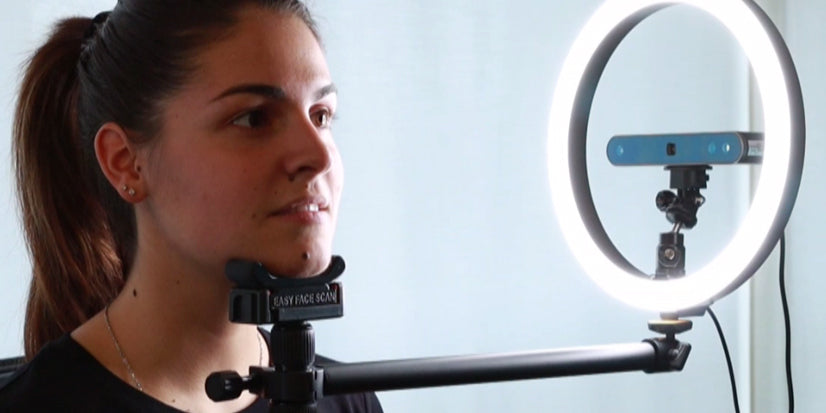In the world of healthcare, 3D scanners are rapidly becoming an essential part of patient care for a myriad of procedures due to their ability to create accurate measurements quickly in a none invasive way. This makes it easier and cheaper for doctors to provide more comfortable and better-customized patient care.
So let’s get into it and look at how 3D scanners are benefitting 21st-century healthcare.
Prosthetics
Prosthetics have existed for thousands of years, with ancient Egyptian mummies discovered still wearing prosthetics. But it’s only recently, with the help of 3D scanners and 3D printers, that it’s been possible to easily create comfortable fits for patients while drastically lowering the cost. By using 3D scanners, doctors can quickly and accurately create a 3D model of the patient’s stump to create a better-fitting, more comfortable socket.
This breakthrough has been especially important for children in developing countries, where getting a prosthetic was prohibitively expensive, compounded by the fact that children need new prosthetics frequently as they grow.

Dentistry
3D scanners have been instrumental in streamlining the creation of dental implants. By allowing dentists to scan patients’ faces and teeth and then combine this data with a complete teeth scan done with an intraoral scanner. They then use the model shape data to produce well-fitting dental implants that only need a few adjustments to fit the patient’s mouth perfectly. Even better, the 3D model allows patients to see how their new teeth and smile will look before fully committing to the process.

Reconstructive Surgery
Surgeons take 3D scans of patients and use the 3D model to plan reconstructive surgery procedures and show the patient how they’ll look after the procedure—for example, using 3D scanners to help people suffering from microtia (people born with malformed or missing ears). The doctor scans the patient’s correctly formed ear and uses it to model another normal size ear for the other side of the head.

For patients who have been disfigured due to disease, accident, or war and are going through reconstructive surgery, seeing how they’ll look after the procedures with the help of 3D scanning is often a source of hope and reassurance that things will get better. And that eventually, they’ll be able to go on and live a normal life again without being reminded of their trauma every time they see themselves in the mirror.
Orthopedics
Most of us spend a lot of time on our feet in our day-to-day lives, so we all understand that it’s no fun when your feet or ankles hurt due to shoes not correctly supporting your foot shape. However, popping some over-the-counter insoles into your shoes isn’t always the best idea because they haven’t been specifically designed for your feet and may aggravate the problem instead.
Fortunately, because of 3D scanners, it’s fast and easy to scan a person’s feet and use the accurate size data to create custom-fitting orthopedic shoes or insoles that help to solve their discomfort. And it’s not just shoes or insoles; 3D scanners can also aid the creation of customized leg or back braces for various corrective procedures.
And with the affordability of 3D scanners in heathcare constantly increasing thanks to companies like Revopoint, these new ways of treatment are becoming accessible to healthcare providers worldwide.



Leave a comment
This site is protected by hCaptcha and the hCaptcha Privacy Policy and Terms of Service apply.